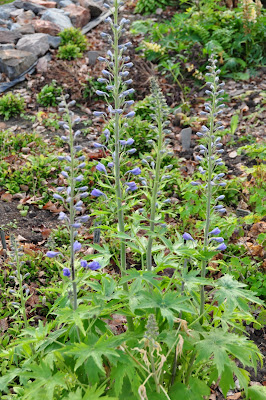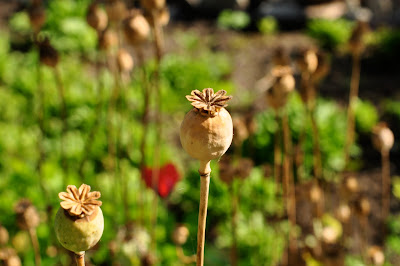Shabby Chic is the "in style" for cedar trees this year, featuring burlap coats with nylon rope trim:

Every few days, I go down and check on the herb seedlings and other basements plants kept under fluorescent lights. I like to have some fresh herbs on hand for cooking over the winter time, but that has not been very successful so far.
Herbs under the lights:

I was not too surprised to see some aphids a few weeks ago, as I've been through this many times before. These little green imports came inside with the plants and cuttings brought in this fall. No matter how careful you are, preventing aphids on plants coming indoors is like preventing influenza from coming in through Canadian airports. These little infectious bugs are just too sneaky. I first saw them hanging out on the tips of the orchids and on the parsley and cilantro. They particularly love the herbs, but they leave the strong-smelling perlargonium cuttings alone. I've been squishing them and used up the last my insecticidal soap sprays. Now, I'm using some Sunlight dish soap diluted in water, which I hope will get the tiny ones that I can't see.
My attempt at a winter display at our front door (cedar boughs from BC, red dogwood twigs, and crabapples):


















































